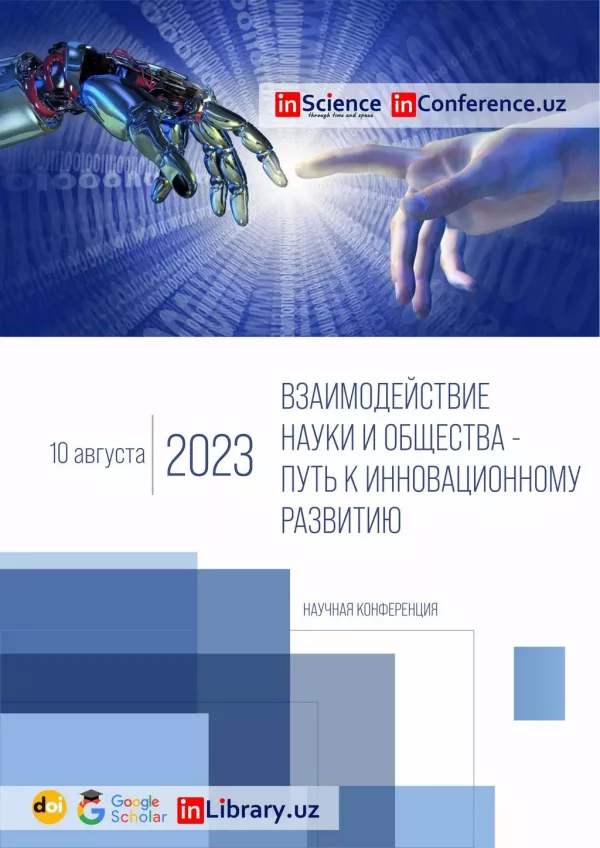DOI
https://doi.org/10.47689/2181-1415-vol3-iss11/S-pp235-245Ключевые слова
научный прогресс / Всеобщая декларация прав человека / ЮНЕСКО / право на науку / право на блага культурыАннотация
В данной статье анализируется история возникновения права на свободу научного творчества. В работе описываются детали возникновения нормы во Всеобщей декларации прав человека на право ползования научными достижениями. Также сопоставлены другие международные акты, указывающие на право пользования или участия в плодах научного прогресса.
Скачивания
Библиографические ссылки
Additional Protocol to the American Convention on Human Rights in the Area of Economic, Social, and Cultural Rights (Protocol of San Salvador), November 17, 1988, OASTS No. 69, Art. 14.1.b; (Revised) Arab Charter on Human Rights, May 22, 2004, reprinted in 12 Int’l Hum. Rts. Rep. 893 (2005), Art. 42.1; Association of Southeast Asian Nations (ASEAN) Human Rights Declaration, November 18, 2012, Art. 32.
American Law Institute, Committee of Advisers on Essential Human Rights, Statement of Essential Human Rights (1945), Americans United for World Organization, New York, 1945, Art. 11.
American Declaration of the Rights and Duties of Man, adopted on May 2, 1948 by the Ninth International Conference of American States, OAS Res XXX, reprinted in Basic Documents Pertaining to Human Rights in the Inter-American System, OEA/Ser L V/II.82 Doc 6 Rev 1, at 17 (1992).
Jakhongir B. ISSUES OF CONSTITUTIONAL PROTECTION OF INDIVIDUAL RIGHTS TO EDUCATION IN UZBEKISTAN AND DEVELOPED COUNTRIES //World Bulletin of Management and Law. – 2022. – Т. 12. – С. 126-129.
Christian Tomuschat, “Universal Periodic Review Procedure: Human Rights Council,” MPEPIL.
C. Atlee, E. Wilkinson, J. T. Bodet, R. Cassin (1985) The Life of the Mind. UNESCO Courier Oct: 8–9.
Аслонова Л. Historical origins and the role of the upper house of parliament in states with a bicameral parliamentary system //Общество и инновации. – 2021. – Т. 2. – №. 1/S. – С. 104-108.
Hector Gros Espiell, Derechos Humanos y Vida Internacional, Instituto de Investigaciones Jurídicas, Comisión Nacional de Derechos Humanos, México, 1995, p. 16, note 9.
International Labor Committee, Declaration Concerning the Aims and Purposes of the International Labour Organisation, adopted at the 26th session of the ILO, Philadelphia, 10 May 1944, Art. I.
Мадиев Ф. Рақамлаштиришнинг конституциявий ҳуқуқ ривожига таъсирининг асосий йўналишлари //Общество и инновации. – 2021. – Т. 2. – №. 12/S. – С. 72-78.
Institut de Droit International, Annuaire de l’institut de droit international, New York session, 1929, Vol. 35-II, 1929, pp. 110–138.
International Covenant on Economic, Social and Cultural Rights, adopted December 16, 1966, entered into force January 3, 1976, 993 UNTS 3.
Mikel Mancisidor, “El Derecho Humano a la Ciencia”, Anuario de Derechos Humanos. Universidad de Chile, 2017.
Ботиров Х. ПРОБЛЕМЫ КОНСТИТУЦИОНАЛИЗМА В УЗБЕКИСТАНЕ //Review of law sciences. – 2020. – Т. 3. – №. Спецвыпуск. – С. 47-52.
Professor Richard Pierre Claude. Science in the Service of Human Rights. An Introductory Class for Science, Technology and Public Health. Princeton University Syllabus, 2002.
The Franklin D. Roosevelt Presidential Library and Museum: www.fdrlibrary.org/archives.
Universal Declaration of Human Rights, adopted December 10, 1948, UNGA Res 217 A (III) (UDHR).
“El fin del Estado es la felicidad del hombre dentro de la sociedad. Deben armonizarse los intereses de la sociedad con los derechos del individuo. El hombre americano no concibe vivir sin justicia. Tampoco concibe vivir sin libertad.”
Загрузки
126 70Опубликован
Как цитировать
Выпуск
Раздел
Лицензия
Copyright (c) 2023 Лайло Аслонова (Автор)

Это произведение доступно по лицензии Creative Commons «Attribution» («Атрибуция») 4.0 Всемирная.




















